In previous articles we have established the relationship between revolt and revolution from the various angles that make up the development of the class struggle’s current cycle. This last article is dedicated to the internationalist struggle today. Below we will focus on the significance of revolutionary theory for today’s class struggles.
Without Revolutionary Theory, There Can Be No Revolutionary Movement
The title of this section comes from a well-known phrase in Lenin’s What Is to Be Done? (1902), but it can easily be traced back to the very origins of Marxism with Marx and Engels. To emphasize this, Lenin added that “this idea cannot be insisted upon too strongly.” This is no less true today. After decades of revolutionary discontinuity and ideological reaction, postmodernism has, as the “spirit of the times,” sought to banish the idea of revolution and even the very existence of an “objective” reality over and above the text;1We have often debated with the various variants of postmodernism in the pages of the magazines Estrategia Internacional (International Strategy), Lucha de Clases (Class Struggle), and Ideas de Izquierda (Ideas of the Left). See, for example, Claudia Cinatti’s “De saberes revolucionarios y certezas posmodernas” [On revolutionary knowledge and postmodern certainties], Lucha de Clases, no. 6 (2006). See also Claudia Cinatti, “A propósito de una lectura de El espinoso sujeto: El centro ausente de la ontología política de Slavoj Zizek” [On the reading of The Ticklish Subject: The Absent Centre of Political Ontology], Estrategia Internacional, no. 19 (January 2003). all this has been accompanied by many theories about the “end of ideology,” the “end of history” (of class struggle), “of work,” and so on.
The current cycle of class struggle taking place internationally is one of the most—if not the most—extended and significant to occur since the end of the 20th century. It is now taking place after more than three decades without any revolutions (although not without important uprisings, revolutionary days, and processes that came close, such as that in Egypt in 2011) and long after the bourgeoisie definitively restored capitalism in the USSR, Eastern Europe, China, and Vietnam, where it had been expropriated in the 20th century. These were decades of retreat in which the workers’ movement had to watch as its traditional organizations turned against it, bowing down to the neoliberal offensive, and in the case of the former bureaucratic workers’ states, to capitalist restoration.2Claudia Cinatti, “La actualidad del análisis de Trotsky frente a las nuevas (y viejas) controversias sobre la transición al socialism” [The relevance of Trotsky’s analysis to new (and old) controversies on the transition to socialism], Estrategia Internacional, no. 22 (November 2005).
Thirty years have passed since the fall of the Berlin Wall, and 11 years have also passed since the fall of Lehman Brothers—the symbol of the crisis of 2008. Today a new international scenario is taking shape. It opens up the possibility that the revolutionary movement could revive in the 21st century, for which it is absolutely crucial that the subjective conditions be renovated after decades of capitalist offensive. The struggle to build revolutionary parties both nationally and internationally takes on a fundamental importance, and revolutionary theory is a determining factor in this struggle. On this question, there are five key problems worth considering: (1) hegemony and self-organization; (2) the theory of permanent revolution; (3) the concrete analysis of situations; (4) strategy; and (5) the communist perspective.
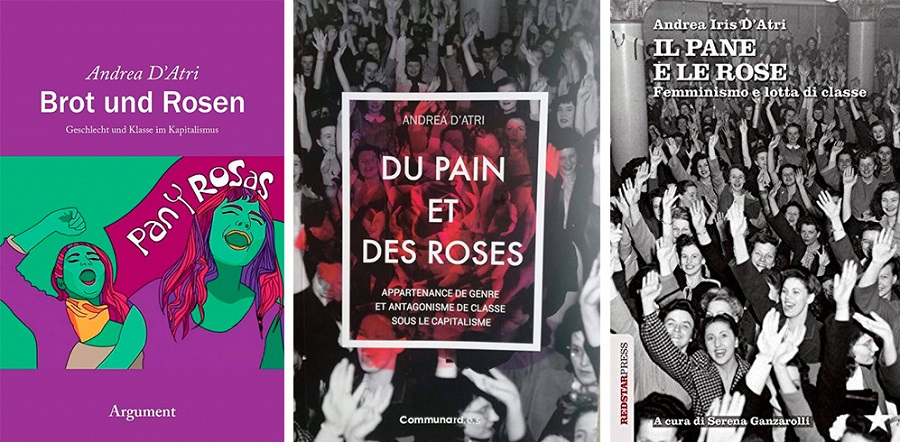
1. Strategic Positions, Hegemony, and Self-Organization
For decades the working class has been declared irredeemably weakened or almost extinct. Analysts based this idea on an analysis of particular phenomena in isolation from the overall picture: the processes of “relocation” and “offshoring,” in which companies moved production from western Europe and the United States to countries in the Global South (even though the working class elsewhere, especially in China, was actually strengthening); a greater heterogeneity within the working class, which resulted from its expansion; and the enormous process of fragmentation that the class suffered (even though it continued to occupy the “strategic positions” of the economy).3Nicolás Del Caño, “Rebelde o precarizada” [Rebellious or precarious], Planeta (2019). This type of ideology around the working class was not just propagated by think tanks and the academic right, but also by theories that claimed to have socialism or communism as their objective. Among the most widely read, Laclau and Mouffe reduced the strategic debate of the working class to a problem of “class essentialism,”4For a debate with Laclau and Mouffe, see Claudia Cinatti, “Ernesto Laclau y el elogio de la hegemonia burguesa” [Ernesto Laclau and praise for bourgeois hegemony], Ideas de Izquierda, no. 9 (2014). and Negri determined that the concept of the “multitude” should replace it.5For a debate with Tony Negri, see Christian Castillo, Estado, poder y comunismo [State, power and communism] (Buenos Aires: Imago Mundi, 2003). All in all, this was—and still is—a very broad ideological offensive that struck a blow at many of the currents that claimed to uphold revolutionary Marxism. It did so in two opposite but complementary ways.
On the one hand, some currents came to regard the workers’ movement as just another “social movement” and its struggle for hegemony as an exercise in “class essentialism.” Hence, constructing revolutionary parties was replaced with constructing “movement parties” or “broad parties” without a revolutionary program or strategy, parties that participate superficially in the existing “movements.”6For a critique of this strategy, see Claudia Cinatti, “¿Qué partido para qué estrategia?” [What strategy for what party?], Estrategia Internacional, no. 24 (December 2007). See also Gastón Gutiérrez, “Sobre la actualidad de la ‘apuesta leninista’” [On the “Leninist wager” today], Lucha de Clases, no. 6 (June 2006); Ariane Díaz, “Nuevos argumentos para viejos reformismos” [New arguments for old reformisms], Lucha de Clases, no. 6 (June 2006). The most symbolic case is perhaps the New Anticapitalist Party (NPA) of France, since it arose from the self-dissolution of one of the most important organizations of Trotskyism internationally, the French Revolutionary Communist League (LCR). Daniel Bensaïd, who was one of its main leaders, rightly pointed to how the left-wing intelligentsia, led by figures such as Foucault and Deleuze, had reached a “strategic zero point,”7Daniel Bensaïd, Éloge de la politique profane [In praise of profane politics] (Paris: Albin Michel, 2007). but Bensaïd would nonetheless end up promoting the foundation of a party without any strategy. To the list of “broad parties,” we can also add Brazil’s Party of Socialism and Freedom (PSOL).
On the other hand, other currents have limited themselves to a self-affirmation of the working class outside yet without pursuing hegemony. Such currents have deepened their routinist and syndicalist orientation of peaceful coexistence within the workers’ organizations as they are. This is the case, for example, of Lutte Ouvrière (LO) in France and the United Socialist Workers’ Party (PSTU) in Brazil, among the most important. An intermediate variant can be seen in Argentina’s Partido Obrero (PO), which has raised a part of the working class, the unemployed movement, to the level of a new subject (the “piquetero subject”) and later combined it with a non-hegemonic policy in the unions.
It is not any metaphysical “essence” that makes the working class the central actor in the revolutionary struggle for socialism, but rather the fact that it is the part of the exploited and oppressed people who occupy the “strategic positions” that make society function. Among other things, this gives it the power to paralyze society. This power has not been lost; indeed it has increased in recent years, especially with the leap in urbanization and the importance that metropolitan transportation has taken on, as can be seen today with the strikes now taking place in France. These “strategic positions” also give the working class a privileged place as the articulator of an independent power, one that can unite the exploited and oppressed people and show that, with self-organization and self-defense, they can defeat the bourgeois state.8Paula Varela, “Crítica al concepto de ‘trabajadores subalternos’” [A critique of the concept of ‘subaltern workers’], Ideas de Izquierda, no. 15 (November 2015). In turn, the control of these key positions of social production and reproduction is decisive for the creation of a new (socialist) order that can toward the liberation of society from exploitation and oppression.
That said, the women’s movement has emerged as a powerful mass movement in many countries, with one of its most important expressions in Chile, an epicenter of the current cycle of protest.9The FT-CI has spent two decades on the themes of women, feminism, and socialism. Among other books published by FT-CI militants on this theme, along with many articles, see the following: Andrea D’Atri, Pan y rosas: Pertenencia de género y antagonismo de clase en el capitalismo [Bread and roses: Gender and class antagonism under capitalism] (available in Spanish, Portuguese, Italian, French, German and later this year in English); Andrea D’Atri, Celeste Murillo, and Ana Sánchez, Luchadoras [Women fighters]; Josefina Martínez and Cynthia Burgueño, Patriarcado y capitalismo: Feminismo, clase y diversidad [Patriarchy and capitalism: Feminism, class and diversity]; Josefina Martínez, Revolucionarias [Female revolutionaries]; Diana Assunção, ed., A precarização tem rosto de mulher [Precarity has a woman’s face]; Andrea D’Atri and Diana Assunção, Lutadoras [Women fighters]. There is also the environmental movement, with its “Fridays for the Future” and “Extinction Rebellion.”10“Capitalism is Destroying the Planet, Let’s Destroy Capitalism,” International Declaration of the FT-CI. For its part, the student movement in places such as Chile and France has an enormous tradition of struggle. Nevertheless, the specific sectors of the working class that hold the “strategic positions” remain separated from the movements and the rest of the class, such as the precarious youth who are key players in many of the processes of the current cycle, and separated from the movements. So long as this is the case, the working class is condemned to fragmentation and the Sisyphean task of demanding partial and temporary improvements. But without this decisive force of the working class, the movements as they are—whether of students, women, environmentalists, immigrants—are too weak to defeat the capitalists and their states and to impose a new social order.
It is from here that we can see the full validity of Trotsky’s statement that there can be no revolutionary program (and strategy) without fighting to set up bodies of self-organization and a mass united front, like the “soviets” or councils that can bring together all the sectors in struggle and foreshadow an alternative power. History is full of examples, more or less developed, from the Russian soviets and the German Räte, through to the Iranian shoras and the Chilean cordones industriales.
This “soviet” strategy, which is indispensable to avoid falling into the trap of unconnected movements and union corporatism, nevertheless seems all but forgotten on the Left today. Recovering and developing this strategy has been one of the theoretical battles that the Trotskyist Fraction—Fourth International (FT-CI) has fought since its inception, and it has guided its practice.11One of the FT-CI’s first elaborations on this question was Emilio Albamonte, Fredy Lizarrague, and Manolo Romano, “La estrategia soviética en la lucha por la República obrera” [The soviet strategy and the struggle for a workers’ republic], Estrategia Internacional, no. 4–5 (July 1995). See also Claudia Cinatti and Emilio Albamonte, “Transcending Liberal Democracy and Totalitarianism,” Estrategia Internacional, no. 21 (August 2004). Only a revolutionary party that intervenes in the workers’, women’s, and student movements, while seeking to develop its own currents that fight for this perspective of self-organization, can really propose, in the face of processes of mass radicalization, the need to articulate the material forces capable of unifying the majority of the working class and fight for a new hegemony under a revolutionary socialist program.
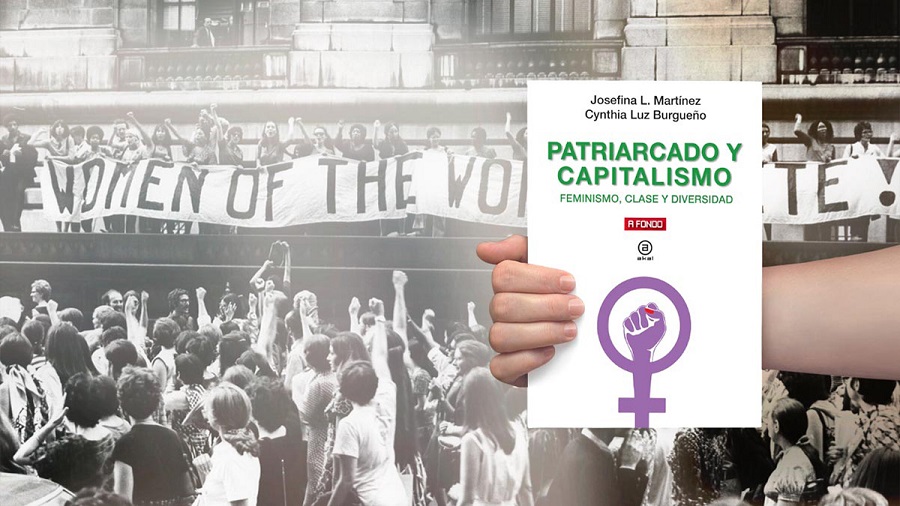
2. Democratic Tasks and “Permanent Revolution”
The “end of history” thesis postulated that bourgeois democracy is the only democracy possible.12For example, in Argentina there are the intellectuals grouped around Punto de Vista (Viewpoint) and the Club de Cultura Socialista (Club of Socialist Culture), who had been linked to different left-wing groups in the 1970s but caved in to alfonsinismo (named after the first postdictatorship Radical president Raúl Alfonsín) once the dictatorship came to an end. They presented semicolonial bourgeois democracy as the most that could be aspired to. Ariane Díaz, “Táctica y estrategia del conformismo social-liberal,” [The tactics and strategy of social-liberal conformism], Ideas de Izquierda, no. 10 (June 2014). Sterilized of its class content, bourgeois democracy was used as a cover for the neoliberal offensive.13Laura Lif and Juan Chingo, “‘Transitions to Democracy’: An Instrument of U.S. Imperialism to Counterweight the Decline of Its Hegemony,” Estrategia Internacional, no. 16 (August 2000). The struggle for political freedoms and rights had to be prudently separated from the structural socioeconomic transformations that are indispensable to fully realize these rights. One of the theoretical versions of this approach that became popular among European neoreformists and Latin American “post-neoliberal” currents was that of Ernesto Laclau. In his approach to democracy and “populism,” its objective foundations (economic bases of capitalism, imperialist oppression, social classes, relations of power) all disappear: the aim is to “radicalize democracy” (without adjectives) and to articulate a progressive populism.
The theory of permanent revolution,14Gabriela Liszt, “http://www.ceipleontrotsky.org/Prologo-5005">Prólogo a la compilación Teoría de la revolución permanente” [Prologue to the compilation The Theory of Permanent Revolution]. elaborated by Trotsky based on the lessons of the revolutions of the 19th and early 20th century, starts from exactly the opposite principle: that the “complete and genuine solution” of democratic tasks is inseparable from structural transformations (for example, in the Russian Revolution, the fight against autocracy and the expropriation of the landowners). Applied to the process in Chile today, the proposal to end the regime inherited from Pinochetism (“It is not 30 pesos, it is 30 years,” went the slogan) is unthinkable without destroying its pillars: subcontracting, the privatized pension funds (AFPs), private profit’s domination of the education and health sector, the strategic resources that have been surrendered to big capital, subordination to imperialism, etc. That is why democratic tasks are necessarily linked to socialist measures that make inroads into capitalist private property, thus making the process “permanent,” one in which workers’ hegemony becomes indispensable.
This “permanent revolution” approach is the logical inverse of the democratic-liberal one, for in one case it is a matter of avoiding revolution and in the other of making it concrete. Most Trotskyist currents since the 1980s, however, have abandoned the theory of permanent revolution.15Recently, Mercedes Petit criticized an article of ours, accusing this author of falsifying the thinking of Nahuel Moreno when we said that for him the revolution was an unstoppable “train” that by its own impulse went beyond the intentions of the leaderships of the mass movement, even if they were petty bourgeois. She quotes Moreno as proof: “It can be compared to a moving train: If it isn’t driven by the Bolshevik Party, the train stops.” But immediately before that sentence, Moreno says, “The revolution is so strong, it pushes so much, that even though the opportunist leadership and the petty bourgeoisie were not socialists, now they are often forced to make [the socialist revolution], due to this pressure.” Neither does Petit refer to the quote we took from Moreno’s article, in which he says, “It is not mandatory for the working class and a revolutionary Marxist party to lead the process of democratic revolution toward socialist revolution.” Now, we can debate whether the train will stop at the 50km or 500km mark. But the fundamental thing here is the evolutionary concept that Moreno starts from (and that Petit defends): the train arrives to the expropriation of the bourgeoisie (with any leadership) and then the revolutionaries replace the locomotive driver and continue on. But the truth is that, on the one hand, in most of the postwar revolutionary processes “the train did not arrive” at the expropriation of the bourgeoisie (France, Greece, Italy, then Portugal, Chile, Nicaragua, etc.). On the other hand, the leaderships (petty bourgeois and Stalinist) that did lead processes that ended with the expropriation of the bourgeoisie (China, Cuba, Vietnam, and to a lesser extent Eastern Europe), used the prestige of being at the head of these revolutions to intervene in the unions and persecute the workers’ vanguard and the Trotskyists (who, in the case of the Revolutionary Workers’ Party [POR] in Cuba, were soon left undefended by Trotskyist currents including Moreno’s, as Ernesto Gonzalez has rightly pointed out), and prevented the international development of these revolutions and the advance of the transition to socialism. This is not simply a “brake” but, as it was historically demonstrated (and Trotsky had previously stated in The Revolution Betrayed), it is the beginning of the road to capitalist restoration. It is one thing to defend the conquests of the revolution and account for the constitution of a workers’ state even if bureaucratically deformed, as Moreno and his current, among others, did correctly against “normativists” such as Lambert or Healy. It is a very different matter not to see that if the working class led by a revolutionary party does not emerge as the leader of the whole oppressed people in the democratic revolution (as Trotsky puts forward in the theory of permanent revolution), the whole process is greatly weakened, because those leaderships undermine the bases of the workers’ state from the beginning, use the force of the state against the vanguard, and prevent other processes from taking a similar course, as was immortalized by Castro when he said that he did not want Nicaragua to become another Cuba. If we return to the train metaphor, we would have to say that the bureaucracy dismantled the train from within (and more so the longer it drove it), stole the parts, did not undertake any maintenance, until at a certain point the train abruptly derailed or, in the best case scenario, there was no locomotive or train left and the passengers were left to go on their way on foot. In some cases, this took place according to the idea that socialism could advance “unconsciously” in hand with supposed “triumphant democratic revolutions” (revolutions in the regime),16Gabriela Liszt, “Historia y balance del MAS argentino (parte1)” [History and assessment of the Argentine MAS: Part 1], Lucha de Clases, no. 6 (June 2006). and saw the struggle for certain democratic demands (for instance, against dictatorships) separated from democratic-structural problems (in the semicolonies: imperialist oppression, the agrarian question, etc.). For example, this theory led the International Workers League—Fourth International (LIT-CI), the international current whose main party is the Brazilian PSTU, to deny the existence of an institutional coup in Brazil in 2016 and to mix their banners with the pro-coup right wing. Similarly, the LIT-CI saluted the fall of the regime in Libya that came about through the NATO offensive (2011) as a “tremendous victory of the masses,” and the like. There was also the former French LCR—and then the NPA—which tried to postulate that the road to socialism passed through the development of a “democracy to the end,”17Emilio Albamonte and Matías Maiello, “At the Limits of the ‘Bourgeois Restoration’.” one that lacked a clear class content and that would be built with the aid of the institutions of the bourgeois democratic regime. This formed the foundation for their abandonment of a clearly revolutionary strategy and program.
This abandonment of the theory of permanent revolution occurs precisely when the overlap between democratic struggles and the struggle against capitalism has enormously broadened and gives greater ground for workers’ hegemony. On the one hand, democratic demands have multiplied as a result of the qualitative turn made by capitalism in linking exploitation and the most diverse forms of oppression (racial, gender, cultural, national). This link plays an increasingly fundamental role in reproducing the system as a whole.18In addition to the books mentioned in note 9, see Daniel Alfonso and Daniel Matos, Questão negra, marxismo e classe operária no Brasil [The Black question, Marxism and the working class in Brazil]; Javo Ferreira, Comunidade, indigenismo e marxismo [Community, indigenism, and Marxism].
On the other hand, imperialist oppression has taken a spectacular leap forward during the neoliberal offensive, which makes any fundamental and lasting democratic conquest in semicolonial and dependent countries unthinkable without emancipation from imperialism.19On current discussions of imperialism, see Esteban Mercatante, “Global Capitalism as Imperialist Construct“; “Open Veins of the Global South“; and “London: The Power to Use Other People’s Money.” The “national” bourgeoisies have abandoned any pretensions to this effect. This can be seen not only in Bolsonaro’s ultra-neoliberalism, but also in the failure of Latin America’s “post-neoliberal” governments, which even in their most radical versions, such as Chavismo, were unable to modify the structure of dependency. Evo Morales and the MAS legitimizing the civic-military coup and betraying the resistance; Lula and the PT deserting any serious struggle against the institutional coup and then against Bolsonaro; Alberto and Cristina Fernandez implementing austerity plans to please the IMF—these are examples of the “national” bourgeoisies, even their “progressive” versions, preferring to kneel at the feet of imperialism rather than unleash the mobilization of the masses.
Only the unity of the working class together with the exploited and oppressed people can stand as a real alternative, conquering its own power to fully and effectively solve the democratic tasks and national emancipation, linking its struggle to that of the working class in the central countries, and establishing a new social order. These elements (although not only these, which we will return to later) raise the actuality of the theory-program of permanent revolution and make the need to re-create its contours a central element of the theoretical battles posed today.20The recovery of the program-theory of permanent revolution has been key for the FT-CI since its inception. One of the first elaborations on this was “Polemic with the LIT and the Theoretical Legacy of Nahuel Moreno.” See also Leon Trotsky, La teoría de la revolución permanente (compilación) [The theory of permanent revolution (compilation)].
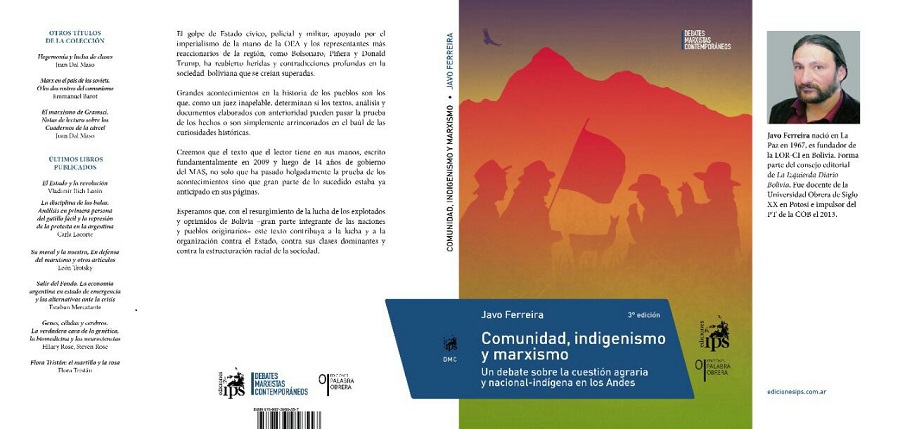
3. Concrete Analysis of Specific Situations
Today we are facing the overall crisis of the neoliberal order, a crisis that has marked the last few decades. Along with the decline of U.S. hegemony must be added the historic capitalist crisis that began in 2008. While those who support neo-Keynesianism argue that massive state investment equivalent to that of the Second World War, purged of the “small detail” of the widespread slaughter, is needed to boost the economy,21Paula Bach, “Economía, política y guerra: Ese oscuro objeto (neo)keynesiano” [Economy, politics and war: That dark (neo)Keynesian object], Estrategia Internacional, no. 28 (2012). the trade war between the United States and China (and the much deeper dispute over technological supremacy) demonstrates that harmonious “globalization” has come to an end and that great-power nationalism has returned.
This is far removed from a mechanical catastrophism that is applicable to all times and places—which is alien to politics in general and to revolutionary politics in particular. Instead, as Gramsci noted, in the face of the “catastrophic ‘incursions’ of the immediate economic element (crises, depressions, etc.),” the political superstructure in the more advanced economies has developed a greater capacity of resistance. After the fall of Lehman Brothers, the economic “crash” was prevented by massive state intervention to save the big banks and corporations at the expense of the living conditions of the masses. All this did not, however, solve the crisis but prolonged it by slowing it down to a crawl22Paula Bach, “Estancamiento secular, fundamentos y dinámica de la crisis” [Secular stagnation, foundations and dynamics of the crisis], Estrategia Internacional, no. 29 (2016). and exponentially increasing inequality.
These are the profound causes of the mass upsurges we see in various countries today. It would nevertheless be a mistake to focus solely on this as if it were the one single trend that mechanically translates to a turn to the left. Categories such as Gramsci’s concept of “organic crisis,” outlined in his Prison Notebooks, are very useful23On Gramsci’s thought, see Juan Dal Maso’s El Marxismo de Gramsci [The Marxism of Gramsci], which was recently published in Portuguese with a prologue by renowned Italian researcher Fabio Frosini. On the thought of Gramsci and Trotsky by the same author, see Hegemonia y lucha de clases [Hegemony and class struggle]. See also Emilio Albamonte and Manolo Romano, “Trotsky y Gramsci: Convergencias y divergencias” [Trotsky and Gramsci: Convergences and divergences], Estrategia Internacional, no. 19 (January 2003); Emilio Albamonte and Matías Maiello, “http://www.estrategiainternacional.org/Gramsci-Trotsky-y-la-democracia-capitalista?lang=es">Gramsci, Trotsky y la democracia capitalista” [Gramsci, Trotsky and capitalist democracy], Estrategia Internacional, no. 29 (2016); “Trotsky and Gramsci: Debates on Strategy concerning the Revolution in the ‘West’” as well as other articles that have appeared in Left Voice. in addressing the crises that are affecting many countries (both central and peripheral) today, where either a “failure of the ruling class” or the action of the masses opens up a period of political ruptures between the masses and their traditional parties and changes in ways of thinking. These situations in which “the old has not died and the new has still not been born” make “solutions of force,” that is, both the Bonapartist turns and the convulsive tendencies of the class struggle, the order of the day.
These crises do not, however, translate into “gaps” in hegemony. As the processes of the last decade have shown, in the absence of an independent and hegemonic strategic alternative of the working class, there can be “left” diversions (Syriza, which ended up applying austerity in Greece; Podemos, which is now forming a government with the PSOE in Spain); they can be capitalized on by the Right (in France the attempt by the Far Right’s Marine Le Pen to capture the “useful vote” of the Yellow Vests against Macron); or they can give rise to more Bonapartist options (the June 2013 protests in Brazil, which in the face of the attacks by the PT and the absence of a left that could pose as an alternative, ended up receding and leaving right-wing mobilizations in their place, the institutional coup, and then Bolsonaro; and Erdogan’s self-coup after the Taksim Square movement in Turkey).
In turn the capitalist state, as both Trotsky and Gramsci with his concept of the “integral state” point out, is far from limiting itself to passively “waiting” for consensus. The state is instead dedicated to “organizing” consensus through the statization of mass organizations and the development of bureaucracies within them (starting with the trade unions but in the “movements” as well), a consensus that guarantees division within the working class and between the different movements. We saw this in France (2018), where the trade union leaderships sought to isolate the Yellow Vests24Juan Chingo, Gilets Jaunes: Le soulèvement [Yellow Vests: The Uprising], Communard.e.s, 2019.; in Ecuador, where the Confederation of Indigenous Nationalities of Ecuador (CONAIE) sought to keep the indigenous movement separated from others; and in Chile, where the “Social Unity Roundtable” bureaucracies fell in behind the operation to isolate the most radical youth and the poor from the rest of the population.
Elements such as these are fundamental for escaping from any objectivist vision of these processes that harbors the illusion of revolutionary triumphs through revolt. The spontaneous upsurge does not allow us to avoid the struggle against reformism and bureaucracy. On the contrary, it makes it more acute. It is a central problem that makes it all the more fundamental to build revolutionary parties, nationally and internationally.
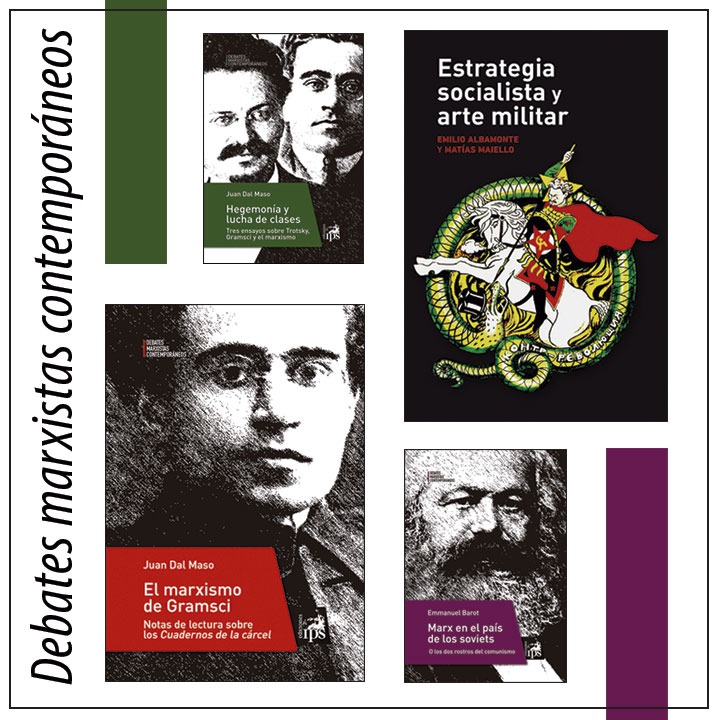
4. An Indispensable Return to Strategy
Strategic reflection has been notably absent from the debates of the last period, which saw the defeat of the 1970s upsurge. These were years in which anti-strategic theories flourished, from the fatalism of a Foucault, who sees a sum of resistances without the possibility of victory, to the voluntarism of a Negri, who proclaims a “communism here and now” without either revolution or transition.25Matías Maiello and Emilio Albamonte, “Marxism and Military Strategy.” On the terrain of the party-building Left, the absence of strategy is commonly replaced by the routine of tactics (electoral and union), and is separated from the struggle to build a revolutionary party on an international level, which is replaced—at best—with diplomatic agreements that quickly end in nothing.
If the revolutionary transitional program poses what it is we set out to win, strategy refers to how to do it. With the development of the current cycle of class struggle, the problems of tactics and strategy are becoming increasingly pressing. Without looking at these from the basis of theoretical development, it is impossible to seriously address the question of how to go beyond the current stage in these processes of acts of resistance or extreme pressure and deploy the necessary forces needed to break the regimes in question and win by imposing a “new order.”
Without going any further, the transport strike in France today has already lasted longer than the historic 1995 strike, which defeated Juppé’s social security and pension reform plans. This process, the most advanced to date in the present cycle of struggles, sharply poses questions such as whether bodies of self-organization (strike committees and coordinating committees) should be established to ensure that the movement remains in the hands of the strikers themselves. This is necessary for whenever the union bureaucracy seeks a truce with the government and attempts to limit everything to a movement of pressure for negotiations with Macron, as well as to guarantee the effectiveness of the strike and organize self-defense. There are also tactics such as the workers’ united front (“march separately, strike together”) against the bureaucracy, for the imposition of the movement’s unity in action, and the question of hegemony so that the strike process unfolds to become a popular movement.
This is, however, only the beginning of many problems of strategy if we are thinking in terms of revolution, because the general strike poses the problem of power but does not solve it. It is necessary, for example, for the mass movement to develop its own democratic bodies of power (councils, soviets or whatever name they adopt) and its own organizations of self-defense in order to defeat the capitalists and their state. As Trotsky points out,
The masses must sense and understand while in action that the Soviet is their organization, that it marshals the forces for a struggle, for resistance, for self-defense, and for an offensive. They can sense and understand this not from an action of a single day nor in general from any single act, but from the experience of several weeks, months, and perhaps years, with or without interruptions.26Leon Trotsky, The Third International after Lenin—The Draft Program of the Communist International: A Criticism of Fundamentals (1928), section 3, part 2.5, “Soviets and Revolution.”
These themes are part of a wide spectrum of problems of strategy and tactics that have been the subject of development and intense debate throughout the history of revolutionary Marxism. This has been especially so since the Third International and the critical appropriation of many of the classics of strategy, Clausewitz in particular, which are indispensable for approaching Marxism as a “guide to action” (and not a procedure manual). This is why the FT-CI has devoted significant efforts to studying and developing strategy in the current conditions.27As part of this, two seminars were held in 2011 and 2012, which saw the participation of more than 200 members of the FT-CI from different countries. The first focused on the work of Carl von Clausewitz. The second focused on the concept of strategy developed by Marxism in the Third International during its first four congresses and Leon Trotsky’s developments on the subject in particular. Part of this elaboration is the book Estrategia socialista y arte militar [Socialist strategy and military art] by Emilio Albamonte and Matías Maiello, as well as the previously mentioned elaborations on Gramsci and the debates on his thought. Without a clear strategy, it will be difficult for the program to move from the good intentions and daily practice of limited routine to the scenarios established by the bourgeoisie and the “expanded state.”
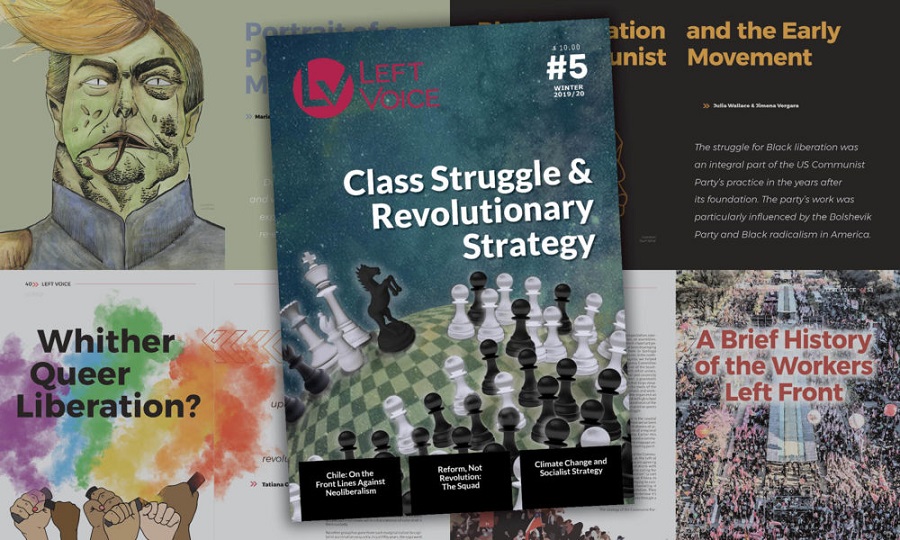
5. The Perspective of Communism
The continuing crisis of capitalism cannot generate new engines of growth for the world economy. This is reflected in Macron’s commitment to pension reform and in the attack on pensioners from the most diverse capitalist governments, from Bolsonaro in Brazil to Alberto and Cristina Fernandez in Argentina. Developments that should be seen as positive for humanity, such as the increase in life expectancy, are seen by the capitalists as a threat and a burden to their profits. As far as work is concerned, the current development of science and technology makes it possible to drastically reduce the length of the working day, but in the hands of the capitalists each leap in labor productivity translates into a greater polarization between extended working hours and unemployment or underemployment.28On this issue and the development of new technologies, see Paula Bach, “¿Fin del trabajo o fetichismo de la robótica?” [The end of work or the fetishism of robotics], Ideas de Izquierda, no. 39 (July 2017); Paula Bach, “La conspiración de los robots” [The robot conspiracy], Ideas de Izquierda, no. 37 (May 2017).
What is certain is that the major structural problems facing capitalism today have a limited range of solutions. For example, in regards to the problem of work, unemployment, and underemployment, the responses that are currently being put forward can be essentially reduced to three. The first, proclaimed by big capital, is currently expressed in a whole series of “labor reforms,” such as those recently voted on in Brazil, which are promoted by different governments to make labor more flexible and precarious. The second is the so-called “universal basic income,” which beyond the differing intentions of its defenders, represents nothing more than a variant of the policy of subsidies and social plans to mitigate the consequences of capitalist rapaciousness. The third is the distribution of working hours and the sliding scale of wages, in which all the work that currently exists is distributed equally among all workers by reducing working hours and establishing a salary in accordance with social (i.e., historical-moral) needs.29See “Los trabajos y los dias” [Works and days], dossier, Ideas de Izquierda, no. 37 (May 2017).
Of course, the latter would imply making inroads into the capitalist private ownership of the means of production, the expropriation of the main levers of the economy, and the rational planning of production as a whole, and therefore the conquest of power by the workers. But this is the only solution to the problem of labor that favors the vast majority, and one that can seriously oppose the capitalist offensive. Moreover, it corresponds to a much more profound (historical) tendency toward reducing working time that society needs for its reproduction, precisely on which the perspective of communism is based—the reduction of all necessary work to a minimum on the basis of developments in science and technology and, in its place, the ability to enable people to devote their energies to the creative leisure of science, art and culture that would be the foundation for a new society of “free and associated producers.”30Emmanuel Barot, Marx au pays des soviets ou les deux visages du communisme [Marx in the land of the soviets or the two faces of communism] [Spanish version also available].
Of course, with the perspective of communism comes its bastardization by various forms of Stalinism for much of the 20th century. On this basis, tons of propaganda was used to identify this emancipatory project with the “communism” of the parasitic bureaucratic dictatorships in the former workers’ states. The liberal-conservative historiography of Figes, Pipes, Service, et al. has spilled rivers of ink to give substance to this approach.31It is of little importance that the historical truth was that, in order to triumph, Stalin had to liquidate the soviets and almost all the Bolshevik leaders, including Trotsky, who led the fight against Stalinism in Russia and internationally. This story in the form of a miniseries can be seen in Trotsky on Netflix, whose falsifications were exposed by a wide range of intellectuals around the world in a declaration launched by Trotsky’s grandson Esteban Volkov and the CEIP “Leon Trotsky.” Today it is an encouraging symptom that in the heart of imperialism there are phenomena like the so-called millennial socialism, in which a majority of youth in the United States have a positive vision of socialism. The vagueness of this idea aside, it shows that there is a new generation beginning to grope for alternatives to capitalism.
But to reclaim and recover communism, not as an Idea with a capital “I,” as Alain Badiou suggests, but as a political perspective for the 21st century, there is a big battle ahead. Hence the great value of the theory of permanent revolution, beyond what we have already pointed out, as a global strategy that puts every partial conquest, including the seizure of power in a country, in the framework of the objective of world revolution and the process of social, political, and cultural changes that after the seizure of power are oriented toward the liberation of labor and the very extinction of the state, of classes, and of exploitation and oppression.

Theory and Practice
The questions we have discussed in this article certainly do not exhaust the debates or the central problems to which revolutionary Marxism must respond to today. This is an enormous task to which the FT-CI, to the best of its ability, has dedicated a systematic effort of elaboration and research that is expressed in dozens of books—some of which are mentioned as references in this article. These include the books produced by Ediciones IPS, the work of the Centro de Investigaciones y Publicaciones “León Trotsky” (from Argentina and Mexico), in the 29 issues of the magazine Estrategia Internacional, the more than 40 issues of the magazine Ideas de Izquierda and the more than 80 issues of the weekly magazine of the same name in Argentina, as well as Ideias de Esquerda and Edições Iskra in Brazil, Ideas Socialistas in Chile, Ideas de Izquierda in Mexico, Left Voice magazine in the United States, Contrapunto in the Spanish State, Ideas de Izquierda in Venezuela, RP Dimanche in France, among others. In addition to these publications, there is the work and debates carried out by FT-CI activists, including collaborations, open forums, and interviews with dozens of intellectuals from all over the world.32There has been much discussion in these publications with people such as Terry Eagleton, Alex Callinicos, Daniel Bensaïd, Ellen Meiksins Wood, Kevin Anderson, Daniel James, Anwar Shaikh, Nancy Fraser, Ilan Pappé, Ana de Miguel, Marcel van der Linden, Michael Roberts, Tony Norfield, John Smith, Leo Panitch, Gérard Duménil, Wendy Goldman, Esther Leslie, Tithi Bhattacharya, Charlie Post, Andrew Kliman, Pietro Basso, Enzo Traverso, David Harvey, Noam Chomsky, Tariq Ali, Warren Montag, Fabio Frosini, Éric Toussaint, Eduardo Grüner, Martín Kohan, Ariel Petruccelli, Selma James, Giuliano Guzzone, Maristella Svampa, Hernán Camarero, Alejandro Schneider, Kohei Saito, Giuseppe Cospito, Stathis Kouvelakis, among many others.
As Trotsky warned, “Theoretically, centrism is amorphous and eclectic; so far as possible it evades theoretical obligations and inclines (in words) to give preference to ‘revolutionary practice’ over theory, without understanding that only Marxian theory can impart revolutionary direction to practice.” We are convinced that only on the basis of this understanding is it possible to consistently fight for the building of a revolutionary movement in the 21st century.
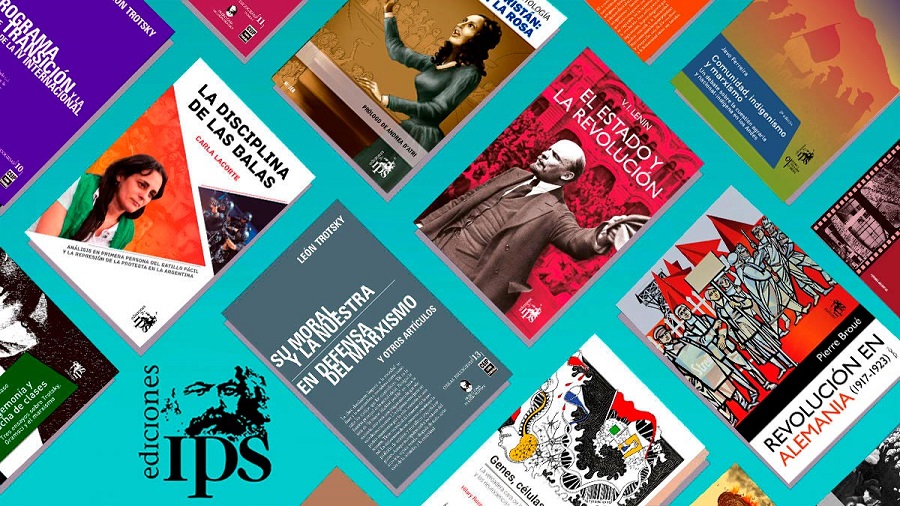
Translation: Sean Robertson
This article first appeared in Ideas de Izquierda (Argentina) on December 29, 2019.
Notes
| ↑1 | We have often debated with the various variants of postmodernism in the pages of the magazines Estrategia Internacional (International Strategy), Lucha de Clases (Class Struggle), and Ideas de Izquierda (Ideas of the Left). See, for example, Claudia Cinatti’s “De saberes revolucionarios y certezas posmodernas” [On revolutionary knowledge and postmodern certainties], Lucha de Clases, no. 6 (2006). See also Claudia Cinatti, “A propósito de una lectura de El espinoso sujeto: El centro ausente de la ontología política de Slavoj Zizek” [On the reading of The Ticklish Subject: The Absent Centre of Political Ontology], Estrategia Internacional, no. 19 (January 2003). |
|---|---|
| ↑2 | Claudia Cinatti, “La actualidad del análisis de Trotsky frente a las nuevas (y viejas) controversias sobre la transición al socialism” [The relevance of Trotsky’s analysis to new (and old) controversies on the transition to socialism], Estrategia Internacional, no. 22 (November 2005). |
| ↑3 | Nicolás Del Caño, “Rebelde o precarizada” [Rebellious or precarious], Planeta (2019). |
| ↑4 | For a debate with Laclau and Mouffe, see Claudia Cinatti, “Ernesto Laclau y el elogio de la hegemonia burguesa” [Ernesto Laclau and praise for bourgeois hegemony], Ideas de Izquierda, no. 9 (2014). |
| ↑5 | For a debate with Tony Negri, see Christian Castillo, Estado, poder y comunismo [State, power and communism] (Buenos Aires: Imago Mundi, 2003). |
| ↑6 | For a critique of this strategy, see Claudia Cinatti, “¿Qué partido para qué estrategia?” [What strategy for what party?], Estrategia Internacional, no. 24 (December 2007). See also Gastón Gutiérrez, “Sobre la actualidad de la ‘apuesta leninista’” [On the “Leninist wager” today], Lucha de Clases, no. 6 (June 2006); Ariane Díaz, “Nuevos argumentos para viejos reformismos” [New arguments for old reformisms], Lucha de Clases, no. 6 (June 2006). |
| ↑7 | Daniel Bensaïd, Éloge de la politique profane [In praise of profane politics] (Paris: Albin Michel, 2007). |
| ↑8 | Paula Varela, “Crítica al concepto de ‘trabajadores subalternos’” [A critique of the concept of ‘subaltern workers’], Ideas de Izquierda, no. 15 (November 2015). |
| ↑9 | The FT-CI has spent two decades on the themes of women, feminism, and socialism. Among other books published by FT-CI militants on this theme, along with many articles, see the following: Andrea D’Atri, Pan y rosas: Pertenencia de género y antagonismo de clase en el capitalismo [Bread and roses: Gender and class antagonism under capitalism] (available in Spanish, Portuguese, Italian, French, German and later this year in English); Andrea D’Atri, Celeste Murillo, and Ana Sánchez, Luchadoras [Women fighters]; Josefina Martínez and Cynthia Burgueño, Patriarcado y capitalismo: Feminismo, clase y diversidad [Patriarchy and capitalism: Feminism, class and diversity]; Josefina Martínez, Revolucionarias [Female revolutionaries]; Diana Assunção, ed., A precarização tem rosto de mulher [Precarity has a woman’s face]; Andrea D’Atri and Diana Assunção, Lutadoras [Women fighters]. |
| ↑10 | “Capitalism is Destroying the Planet, Let’s Destroy Capitalism,” International Declaration of the FT-CI. |
| ↑11 | One of the FT-CI’s first elaborations on this question was Emilio Albamonte, Fredy Lizarrague, and Manolo Romano, “La estrategia soviética en la lucha por la República obrera” [The soviet strategy and the struggle for a workers’ republic], Estrategia Internacional, no. 4–5 (July 1995). See also Claudia Cinatti and Emilio Albamonte, “Transcending Liberal Democracy and Totalitarianism,” Estrategia Internacional, no. 21 (August 2004). |
| ↑12 | For example, in Argentina there are the intellectuals grouped around Punto de Vista (Viewpoint) and the Club de Cultura Socialista (Club of Socialist Culture), who had been linked to different left-wing groups in the 1970s but caved in to alfonsinismo (named after the first postdictatorship Radical president Raúl Alfonsín) once the dictatorship came to an end. They presented semicolonial bourgeois democracy as the most that could be aspired to. Ariane Díaz, “Táctica y estrategia del conformismo social-liberal,” [The tactics and strategy of social-liberal conformism], Ideas de Izquierda, no. 10 (June 2014). |
| ↑13 | Laura Lif and Juan Chingo, “‘Transitions to Democracy’: An Instrument of U.S. Imperialism to Counterweight the Decline of Its Hegemony,” Estrategia Internacional, no. 16 (August 2000). |
| ↑14 | Gabriela Liszt, “http://www.ceipleontrotsky.org/Prologo-5005">Prólogo a la compilación Teoría de la revolución permanente” [Prologue to the compilation The Theory of Permanent Revolution]. |
| ↑15 | Recently, Mercedes Petit criticized an article of ours, accusing this author of falsifying the thinking of Nahuel Moreno when we said that for him the revolution was an unstoppable “train” that by its own impulse went beyond the intentions of the leaderships of the mass movement, even if they were petty bourgeois. She quotes Moreno as proof: “It can be compared to a moving train: If it isn’t driven by the Bolshevik Party, the train stops.” But immediately before that sentence, Moreno says, “The revolution is so strong, it pushes so much, that even though the opportunist leadership and the petty bourgeoisie were not socialists, now they are often forced to make [the socialist revolution], due to this pressure.” Neither does Petit refer to the quote we took from Moreno’s article, in which he says, “It is not mandatory for the working class and a revolutionary Marxist party to lead the process of democratic revolution toward socialist revolution.” Now, we can debate whether the train will stop at the 50km or 500km mark. But the fundamental thing here is the evolutionary concept that Moreno starts from (and that Petit defends): the train arrives to the expropriation of the bourgeoisie (with any leadership) and then the revolutionaries replace the locomotive driver and continue on. But the truth is that, on the one hand, in most of the postwar revolutionary processes “the train did not arrive” at the expropriation of the bourgeoisie (France, Greece, Italy, then Portugal, Chile, Nicaragua, etc.). On the other hand, the leaderships (petty bourgeois and Stalinist) that did lead processes that ended with the expropriation of the bourgeoisie (China, Cuba, Vietnam, and to a lesser extent Eastern Europe), used the prestige of being at the head of these revolutions to intervene in the unions and persecute the workers’ vanguard and the Trotskyists (who, in the case of the Revolutionary Workers’ Party [POR] in Cuba, were soon left undefended by Trotskyist currents including Moreno’s, as Ernesto Gonzalez has rightly pointed out), and prevented the international development of these revolutions and the advance of the transition to socialism. This is not simply a “brake” but, as it was historically demonstrated (and Trotsky had previously stated in The Revolution Betrayed), it is the beginning of the road to capitalist restoration. It is one thing to defend the conquests of the revolution and account for the constitution of a workers’ state even if bureaucratically deformed, as Moreno and his current, among others, did correctly against “normativists” such as Lambert or Healy. It is a very different matter not to see that if the working class led by a revolutionary party does not emerge as the leader of the whole oppressed people in the democratic revolution (as Trotsky puts forward in the theory of permanent revolution), the whole process is greatly weakened, because those leaderships undermine the bases of the workers’ state from the beginning, use the force of the state against the vanguard, and prevent other processes from taking a similar course, as was immortalized by Castro when he said that he did not want Nicaragua to become another Cuba. If we return to the train metaphor, we would have to say that the bureaucracy dismantled the train from within (and more so the longer it drove it), stole the parts, did not undertake any maintenance, until at a certain point the train abruptly derailed or, in the best case scenario, there was no locomotive or train left and the passengers were left to go on their way on foot. |
| ↑16 | Gabriela Liszt, “Historia y balance del MAS argentino (parte1)” [History and assessment of the Argentine MAS: Part 1], Lucha de Clases, no. 6 (June 2006). |
| ↑17 | Emilio Albamonte and Matías Maiello, “At the Limits of the ‘Bourgeois Restoration’.” |
| ↑18 | In addition to the books mentioned in note 9, see Daniel Alfonso and Daniel Matos, Questão negra, marxismo e classe operária no Brasil [The Black question, Marxism and the working class in Brazil]; Javo Ferreira, Comunidade, indigenismo e marxismo [Community, indigenism, and Marxism]. |
| ↑19 | On current discussions of imperialism, see Esteban Mercatante, “Global Capitalism as Imperialist Construct“; “Open Veins of the Global South“; and “London: The Power to Use Other People’s Money.” |
| ↑20 | The recovery of the program-theory of permanent revolution has been key for the FT-CI since its inception. One of the first elaborations on this was “Polemic with the LIT and the Theoretical Legacy of Nahuel Moreno.” See also Leon Trotsky, La teoría de la revolución permanente (compilación) [The theory of permanent revolution (compilation)]. |
| ↑21 | Paula Bach, “Economía, política y guerra: Ese oscuro objeto (neo)keynesiano” [Economy, politics and war: That dark (neo)Keynesian object], Estrategia Internacional, no. 28 (2012). |
| ↑22 | Paula Bach, “Estancamiento secular, fundamentos y dinámica de la crisis” [Secular stagnation, foundations and dynamics of the crisis], Estrategia Internacional, no. 29 (2016). |
| ↑23 | On Gramsci’s thought, see Juan Dal Maso’s El Marxismo de Gramsci [The Marxism of Gramsci], which was recently published in Portuguese with a prologue by renowned Italian researcher Fabio Frosini. On the thought of Gramsci and Trotsky by the same author, see Hegemonia y lucha de clases [Hegemony and class struggle]. See also Emilio Albamonte and Manolo Romano, “Trotsky y Gramsci: Convergencias y divergencias” [Trotsky and Gramsci: Convergences and divergences], Estrategia Internacional, no. 19 (January 2003); Emilio Albamonte and Matías Maiello, “http://www.estrategiainternacional.org/Gramsci-Trotsky-y-la-democracia-capitalista?lang=es">Gramsci, Trotsky y la democracia capitalista” [Gramsci, Trotsky and capitalist democracy], Estrategia Internacional, no. 29 (2016); “Trotsky and Gramsci: Debates on Strategy concerning the Revolution in the ‘West’” as well as other articles that have appeared in Left Voice. |
| ↑24 | Juan Chingo, Gilets Jaunes: Le soulèvement [Yellow Vests: The Uprising], Communard.e.s, 2019. |
| ↑25 | Matías Maiello and Emilio Albamonte, “Marxism and Military Strategy.” |
| ↑26 | Leon Trotsky, The Third International after Lenin—The Draft Program of the Communist International: A Criticism of Fundamentals (1928), section 3, part 2.5, “Soviets and Revolution.” |
| ↑27 | As part of this, two seminars were held in 2011 and 2012, which saw the participation of more than 200 members of the FT-CI from different countries. The first focused on the work of Carl von Clausewitz. The second focused on the concept of strategy developed by Marxism in the Third International during its first four congresses and Leon Trotsky’s developments on the subject in particular. Part of this elaboration is the book Estrategia socialista y arte militar [Socialist strategy and military art] by Emilio Albamonte and Matías Maiello, as well as the previously mentioned elaborations on Gramsci and the debates on his thought. |
| ↑28 | On this issue and the development of new technologies, see Paula Bach, “¿Fin del trabajo o fetichismo de la robótica?” [The end of work or the fetishism of robotics], Ideas de Izquierda, no. 39 (July 2017); Paula Bach, “La conspiración de los robots” [The robot conspiracy], Ideas de Izquierda, no. 37 (May 2017). |
| ↑29 | See “Los trabajos y los dias” [Works and days], dossier, Ideas de Izquierda, no. 37 (May 2017). |
| ↑30 | Emmanuel Barot, Marx au pays des soviets ou les deux visages du communisme [Marx in the land of the soviets or the two faces of communism] [Spanish version also available]. |
| ↑31 | It is of little importance that the historical truth was that, in order to triumph, Stalin had to liquidate the soviets and almost all the Bolshevik leaders, including Trotsky, who led the fight against Stalinism in Russia and internationally. This story in the form of a miniseries can be seen in Trotsky on Netflix, whose falsifications were exposed by a wide range of intellectuals around the world in a declaration launched by Trotsky’s grandson Esteban Volkov and the CEIP “Leon Trotsky.” |
| ↑32 | There has been much discussion in these publications with people such as Terry Eagleton, Alex Callinicos, Daniel Bensaïd, Ellen Meiksins Wood, Kevin Anderson, Daniel James, Anwar Shaikh, Nancy Fraser, Ilan Pappé, Ana de Miguel, Marcel van der Linden, Michael Roberts, Tony Norfield, John Smith, Leo Panitch, Gérard Duménil, Wendy Goldman, Esther Leslie, Tithi Bhattacharya, Charlie Post, Andrew Kliman, Pietro Basso, Enzo Traverso, David Harvey, Noam Chomsky, Tariq Ali, Warren Montag, Fabio Frosini, Éric Toussaint, Eduardo Grüner, Martín Kohan, Ariel Petruccelli, Selma James, Giuliano Guzzone, Maristella Svampa, Hernán Camarero, Alejandro Schneider, Kohei Saito, Giuseppe Cospito, Stathis Kouvelakis, among many others. |











